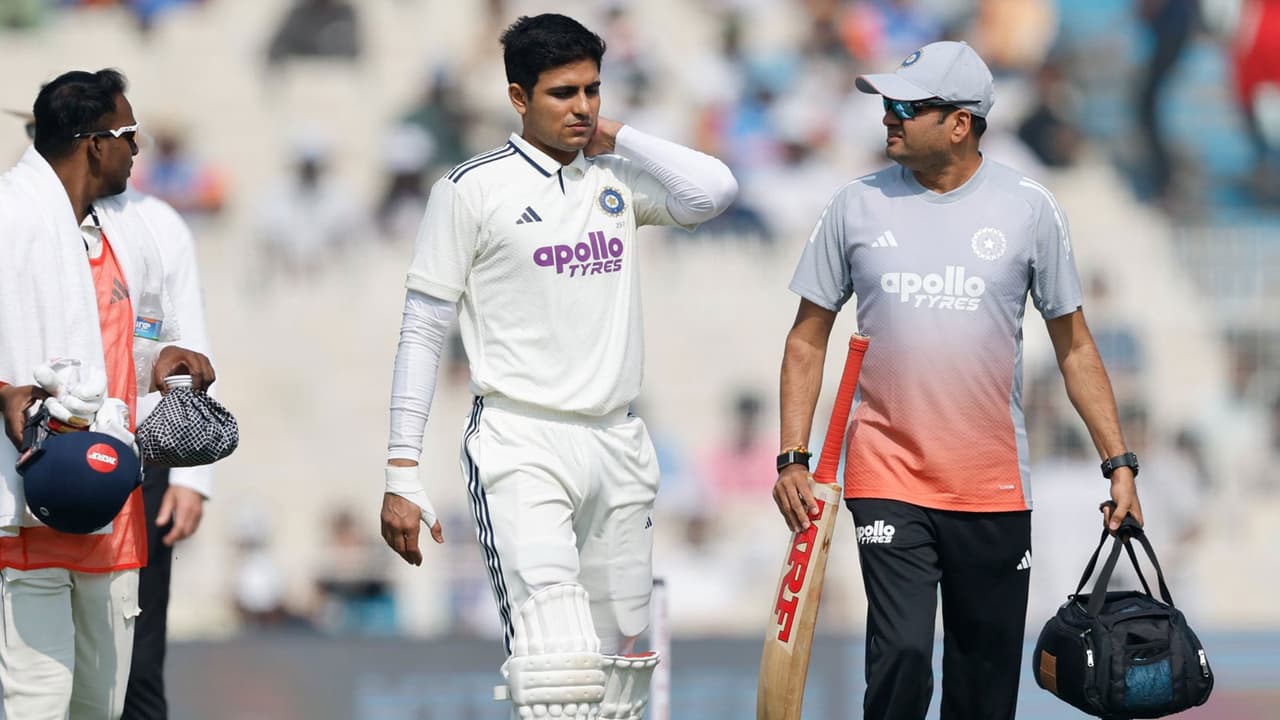As Team India prepares for their upcoming clash in Guwahati, all eyes are on two major talking points—Shubman Gill’s fitness status and the unexpectedly green-tinged surface at the Barsapara Cricket Stadium. With only a short window left before the match, Gill’s delay in returning to the nets and the pitch conditions have become central themes in India’s pre-match build-up.
Gill’s Absence Raises Concerns Ahead of Crucial Fixture
Shubman Gill, one of India’s most dependable modern batters across formats, is yet to resume full-intensity net sessions. Although he has been present with the squad and involved in light physical routines, sources indicate that he hasn’t taken part in batting drills, leading to speculation about whether he will be match-ready.
Gill’s recent form makes his availability even more crucial. Over the past year, he has evolved into a key member of India’s top order, known for his ability to stabilise innings under pressure and accelerate when required. His elegant stroke play, combined with consistent performances, has made him indispensable—especially in white-ball cricket.
However, the coaching staff remains cautious. Following a minor niggle reported during the previous series, the support team is not willing to rush him back without ensuring complete fitness. With a demanding cricket calendar ahead, India is expected to prioritise long-term health over short-term gains.
Team physios are reportedly monitoring Gill closely. A final call on his participation may come only after the scheduled practice session on the eve of the match, where he is expected to test himself in the nets if cleared.
Green Tops in India: Guwahati Pitch Surprises Everyone
While Gill’s fitness draws attention off the field, the Guwahati pitch has become the centre of cricketing conversation. Photos and early pitch reports reveal a surface with a noticeable green tinge, sparking interest among players, experts, and fans alike.
Green surfaces are not commonly associated with Indian pitches, which traditionally favour spinners or offer slow, low bounce. The lush covering of grass in Guwahati suggests a potential deviation from the norm, possibly giving fast bowlers an early advantage.
Why So Much Grass? Groundsmen Offer Insight
According to local curators, the grass has been left intentionally to:
- Provide more pace and bounce
- Protect the pitch from early wear
- Improve moisture retention in the humid Assam conditions
There is also a view that the pitch might bare out slightly by match day, but at least the initial overs are expected to favour seamers.
Past matches at Barsapara have seen high scores, but the current look of the wicket hints at a more competitive contest between bat and ball—especially if overcast conditions come into play.
What Does It Mean for India’s Playing XI?
The surface may significantly influence India’s team selection. With extra grass and potentially lively conditions, India might consider:
1. Adding a Third Pacers Option
The team could be tempted to play an additional fast bowler to maximise the assistance from the pitch.
2. Resting a Specialist Spinner
If the wicket stays green, both teams may rely more heavily on seamers.
3. Shubman Gill Replacement Strategy
If Gill doesn’t recover in time, the management will have to rethink the top order combination. India has backup options, but Gill’s absence could force a reshuffle in the batting line-up.
Players like Ruturaj Gaikwad or Yashasvi Jaiswal may be considered as potential replacements. Both bring their own strengths, but replicating Gill’s adaptability and experience remains challenging.
Opposition Eyes Opportunity on Lively Track
While India assesses its squad and pitch strategy, the visiting team is hopeful that the green surface will allow them to exploit early conditions. Historically, Guwahati pitches have not favoured seam bowlers overwhelmingly, but the current appearance has lifted their spirits.
A lively pitch could level the playing field, especially if swing and seam movement are on offer. Visiting bowlers, known for their ability to move the new ball, may aim to pressure India’s top order early—more so if Gill is unavailable.
Weather Conditions Add Another Layer of Uncertainty
Guwahati’s unpredictable weather remains an additional factor. High humidity, occasional cloud cover, and intermittent rain can influence both the pitch behaviour and swing conditions.
Overcast skies typically support lateral movement, which may work in favour of fast bowlers. However, heavy dew later in the evening could challenge bowlers’ grip and tilt the balance toward batters.
Fans Await Clarity on Gill’s Availability
Shubman Gill’s absence from the nets has left fans anxious. His presence not only boosts India’s batting confidence but also brings stability to the top order. Social media has seen an outpouring of concern and hopes for his quick recovery.
India’s batting structure, especially in pressure situations, often revolves around Gill’s ability to anchor an innings. His absence could force India to adopt a more aggressive or experimental approach.
Team India Likely to Make Final Assessment Before Toss
With uncertainty around the pitch and Gill’s fitness, both decisions—team combination and final XI—may remain pending until the last team meeting ahead of the match.
Head coach Rahul Dravid and captain Rohit Sharma are known for taking a measured approach. They will likely watch how the pitch behaves during warm-ups before making the final call.
A High-Intensity Match Expected Regardless of Conditions
Despite the uncertainties, one thing is clear: the upcoming match in Guwahati has generated immense anticipation. Whether it’s the curiosity around the green surface, the tactical adjustments, or Gill’s fitness decision, the narrative is richer than usual.
India’s performance on a green pitch will also be closely analysed, as such surfaces offer valuable preparation for overseas tours where seam-friendly conditions are the norm.











